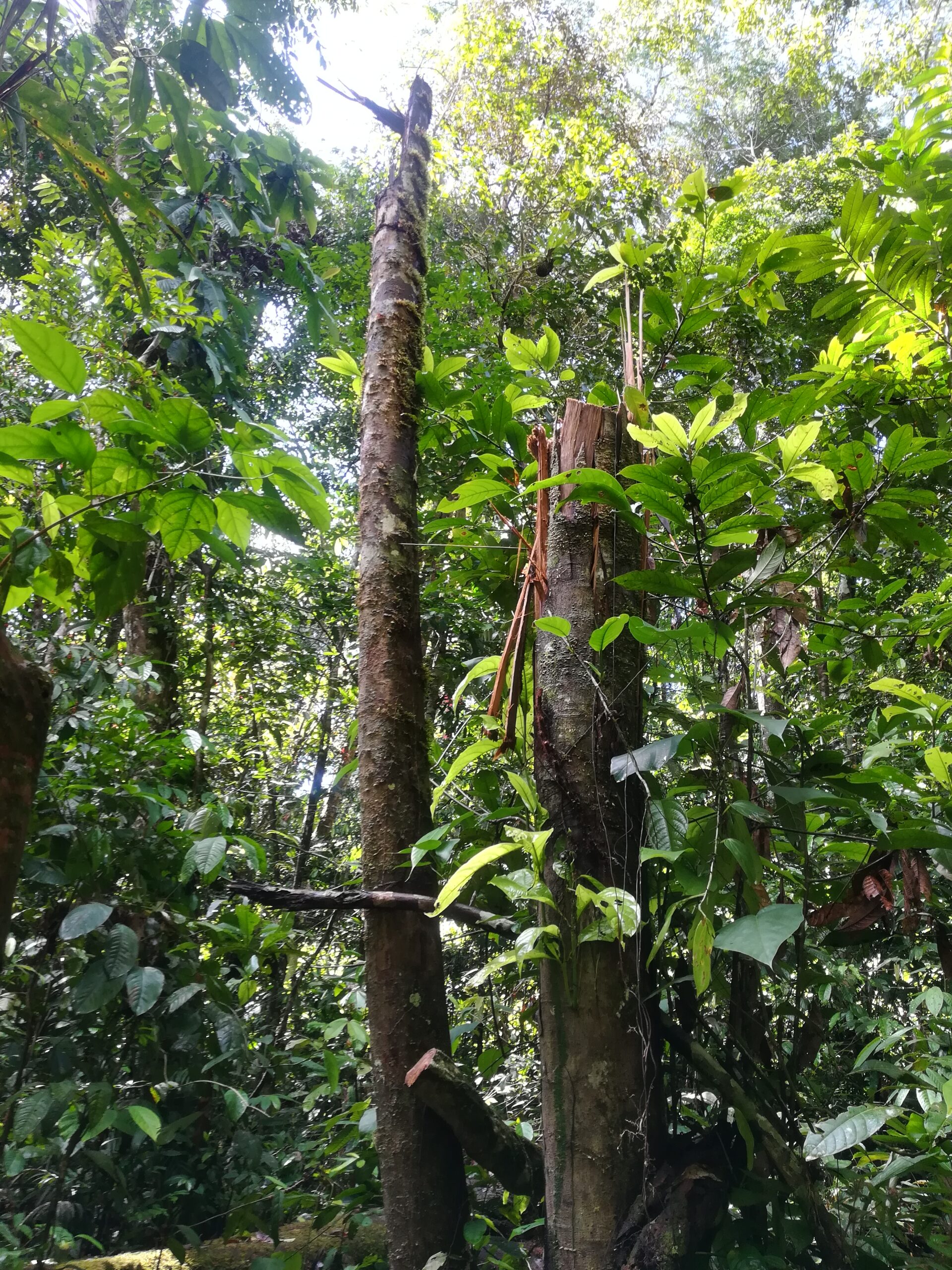October 29, 2021
What Are the Most Important Mortality Risk Factors in Tropical Forests?
Assessment of multiple tree-level conditions across six tropical forests to provide a ranking of tree mortality risks.

Dead (left) and alive but damaged (right) trees in the Amacayacu Forest Dynamics Plot in the Northwestern Amazon.
[Courtesy Daniel Zuleta.]
The Science
The rate at which trees are dying is increasing worldwide. Yet, little is known about what kills trees in natural forests. Tree mortality is particularly difficult to study in diverse tropical forests, where species vary widely in their responses to different conditions. Forest ecologists assessed trees of 1,900 species in six tropical forests to provide the first ranking of importance of mortality risk factors. Among 19 mortality risk factors evaluated, researchers found that those related to tree-level damage were the dominant risks associated with tree mortality.
The Impact
Identification of priority risk factors for tree mortality can help focus and improve dynamic vegetation model predictability for tropical forests and their ecosystem processes. Future research should focus on the links between damage-related risks, their climatic drivers, and the physiological processes to enable mechanistic predictions of tree mortality.
Summary
Carbon losses due to tree mortality in tropical forests constitute a significant source of uncertainty in vegetation models. Yet, the relative importance of mortality risk factors remains poorly understood. In this study, researchers recorded data on a broad suite of observations of living trees and monitored their subsequent survival to provide a ranking of importance of tree mortality risk factors in tropical forests. The researchers presented a new framework for quantifying the importance of mortality risk factors and applied it to compare 19 risks on 31,203 trees (1,977 species) in 14 one-year periods in six tropical forests. Factors related to light-limitation and tree-level damage, such as crown or trunk loss, were the most impactful in terms of their contribution to total mortality. Leaning, defoliation, and lower elevation ranked next in importance, whereas other risks expected to be important, such as those associated with lianas, stranglers, trunk deformities, and trunk rot, showed lesser impact in this study. This ranking should inform future investigations to improve predictions of the fate of forests in global dynamic vegetation models.
Principal Investigator
Daniel Zuleta
Smithsonian Tropical Research Institute
dfzuleta@gmail.com
Program Manager
Brian Benscoter
U.S. Department of Energy, Biological and Environmental Research (SC-33)
Environmental System Science
brian.benscoter@science.doe.gov
Funding
This project was supported as part of the Next Generation Ecosystem Experiments–Tropics and was funded by the Office of Biological and Environmental Research (BER) within the U.S. Department of Energy’s (DOE) Office of Science. Data collection was supported by the Forest Global Earth Observatory (ForestGEO) of the Smithsonian Institution.
References
Zuleta, D., et al. "Individual Tree Damage Dominates Mortality Risk Factors across Six Tropical Forests." New Phytologist 233 705–721 (2021). https://doi.org/DOI: 10.1111/nph.17832.

